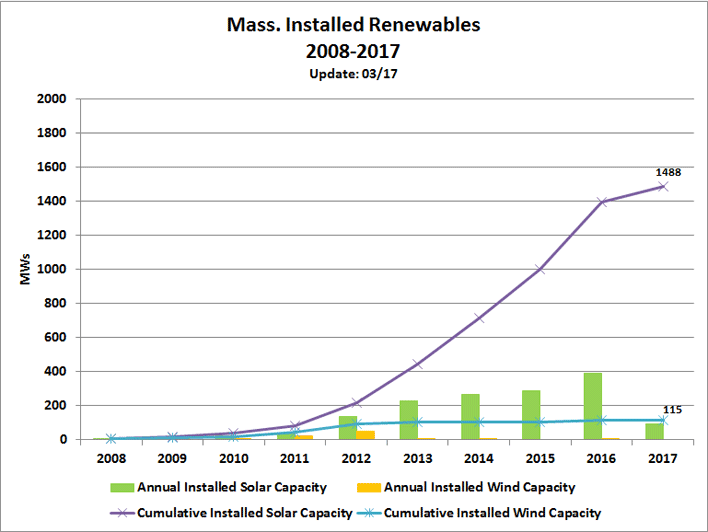The first Massachusetts SREC program, referred to as SREC-I, was launched in January 2010 by the Massachusetts Department of Energy Resources (DOER). This SREC program was created as a result of the Green Communities Act of 2008 and the state’s Renewable Portfolio Standard (RPS), which arose out of the restructuring of the electricity industry in the late 1990’s. The SREC program serves as a Massachusetts-specific solar carve-out of the Renewable Energy Certificate (REC) market.
When SREC-I was first established, a capacity limit of 400 MW was put into place. However, this limit was reached early, in the spring of 2013, and the cap was subsequently raised to approximately 650 MW to accommodate transition projects before the commencement of a second SREC program. The DOER then initiated its SREC-II program in spring of 2014 as an incentive mechanism to further encourage Massachusetts to reach its goal of 1,600 MW of new solar installations by 2020.
The DOER determines the number of SRECs utilities are required to purchase to meet RPS guidelines based on a compliance formula which is subject to a number of factors including how much solar capacity was installed in the previous years. In the Commonwealth, a solar project receives one SREC for each MWh (1000 kWh) it produces. In the SREC-II program certain project types are ascribed greater or less value for their SRECs depending on locational factors, among others. The market value of an SREC varies based on supply (solar production) and the utility compliance obligation in that particular period.
With the SREC program caps being easily met, and the fact that long-term sustainable solutions take time to deploy, Massachusetts is currently in the process of designing its “Next Generation Incentive Program.” The DOER filed an Emergency Regulation on April 8, 2016 with the Secretary of the Commonwealth’s office to address recent developments in the state’s solar PV market and allow for a transition from the current SREC-II program to the next one. This new solar incentive regime, stemming from a solar law signed by Governor Charlie Baker on April 11, 2016, is expected to begin in mid-to-late 2017.
Overall Massachusetts’ pioneering SREC programs have provided incentives towards creating sustainable solar solutions, promoting cost-effective solar development in the Commonwealth while positioning the state as a national leader in clean energy.
For more stories and articles on Massachusetts SRECs (Solar Renewable Energy Certificates) click here:

